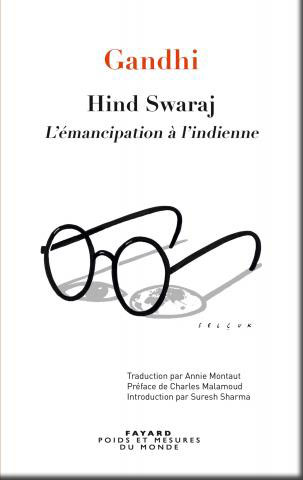One of the most important scholarly works by Mahatma Gandhi, the Hind Swaraj or 'Indian Home Rule', first published in 1910 has now been translated into French language. This feat has been achieved by a team of scholars from The Nantes Institute for Advanced Study in France. It is in the Hind Swaraj that Bapu first expressed his views on Swaraj, modern civilization and mechanization.
The translated work called 'Hind Swaraj: L'emancipation a I'indienne' carries a preface by renowned a linguist and anthropologist Charles Malamoud, who is a specialist of religions in India. The French version of Hind Swaraj relies on the Gujarati version that Bapu originally wrote as well as 'Hind Swaraj- A critical edition' by Suresh Sharma and Tridip Suhrud. The translation work was led by Annie Montaut in the institute.
Bapu had written the Hind Swaraj in Gujarati while traveling from London to South Africa onboard SS Kildonan Castle between November 13 and November 22, 1909. In the book Gandhi gives a diagnosis for the problems of humanity in modern times, the causes, and his opinions on their remedy.
"Hind Swaraj is considered a seed text for any scholar interested in understanding Gandhiji. The book's translation into French would encourage leading European scholars to pursue further research in Gandhian studies," says director Sabarmati Ashram, Tridip Suhrud.
Bapu's Hind Swaraj is actually written in a dialogue form between two people, which are 'The Reader' and 'The Editor'. The Reader in Bapu's book represents an Indian commoner whom Bapu would have been addressing with Hind Swaraj. The Reader voices the common beliefs and arguments of the time concerning Indian Independence. Gandhiji, The Editor, explains why those arguments are flawed and interject his own arguments.
"A book written in a dialogue form allows the author to set up contradictions far more clearly, especially when it came to addressing complex issues of a society. Bapu understood this very well and he chose this style keeping the Indian audience in mind. The Gita for instance or teachings of Buddha or any other great religious texts of our country follow a similar style. It is the language most Indians understood," Suhrud added.
Bapu's first Swaraj text now in French too
